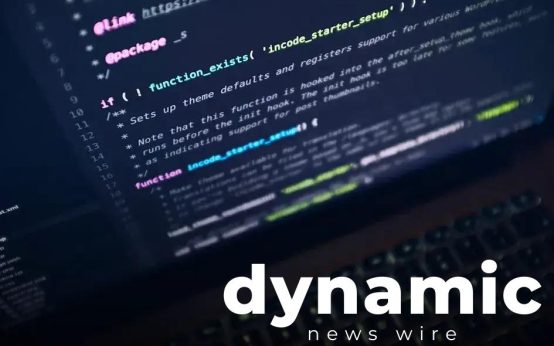Edge Computing is revolutionizing how data is processed by moving closer to the data source, improving efficiency and reducing latency. As technology evolves, understanding its benefits and challenges becomes essential for businesses looking to optimize their operations.
Understanding Edge Computing
Edge computing is revolutionizing the way data is processed, especially as vast amounts of information flow from devices to centralized servers. Unlike traditional cloud computing, which relies heavily on centralized data centers, edge computing processes data at the periphery of the network, closer to the source of data generation.
This approach reduces latency because data doesn’t have to travel as far, meaning users get faster responses. It heavily benefits applications requiring real-time processing, such as streaming video, autonomous vehicles, and Internet of Things (IoT) devices. By moving some of these processes to the ‘edge’ of the network, organizations can achieve greater efficiency and faster speeds.
One key aspect of edge computing is its reliance on distributed infrastructure. This means smaller data centers or processing power is decentralized across various physical locations. These mini data centers enhance reliability as the distributed nature cushions against any single point of failure.
With the rising demand for real-time data processing and the exponential growth of IoT devices, edge computing provides a scalable solution. It shifts away from the traditional model where the cloud remains the focal point towards a more balanced approach.
Edge computing is gradually being integrated into various sectors, from healthcare, where it assists in processing patient data in real time, to industries like manufacturing, where it helps in quality control processes through IoT-enabled devices. Edge computing brings the power of computing closer to where data is being generated, offering a transformative shift in how industries operate today.
Benefits of Edge Computing

Edge computing offers numerous advantages for modern data processing. By bringing computation and storage closer to the data source, it significantly reduces latency. This is crucial for real-time applications such as autonomous vehicles and smart cities, where immediate data processing can be a game-changer. Additionally, it alleviates the burden on centralized data centers, allowing for improved bandwidth efficiency by processing and aggregating data locally. This method also fosters better data privacy, as sensitive information can be processed at the edge without being transmitted over long distances. Furthermore, edge computing enhances system reliability. In scenarios where connectivity to the central cloud may be limited or unavailable, edge devices can continue operations independently, ensuring uninterrupted service delivery. The approach allows for scalability as well, since devices can be added to the network without significantly impacting the system’s performance as a whole. These benefits highlight how edge computing not only optimizes performance but also empowers a more robust and flexible data processing framework.
Challenges in Implementation
Implementing edge computing involves several significant challenges that organizations must address effectively to harness its benefits. One major hurdle is the
cost of initial setup
. Deploying edge computing infrastructures can be costly because it requires upgrading existing systems and investing in new hardware such as edge devices and servers.
Another challenge is ensuring interoperability between different edge devices and platforms. Since edge computing often involves integrating various devices and technologies, ensuring smooth communication and compatibility can be complex. Many systems were not originally designed to operate in an edge context, and adjustments are necessary to ensure they work together seamlessly.
Managing data privacy and security is also a critical challenge. While edge computing can enhance security by processing data closer to its source, it also adds complexity because sensitive data might be handled across numerous locations. Protecting data at the edge from cyber threats requires robust security protocols and continuous monitoring.
Furthermore, maintaining a
stable network connection
is vital for optimal edge computing performance. Devices at the edge need reliable connectivity to function properly, and network disruptions can cause data processing delays or errors, impacting service quality.
Last but not least, scalability presents a challenge as well. As the demand for data processing at the edge grows, organizations must be prepared to scale their infrastructure quickly and efficiently. This involves not only deploying more devices but also managing increased data loads and ensuring consistent performance.
Impact on Data Security

Edge computing has a profound impact on data security. By processing data closer to its source, edge computing reduces the risk of sensitive information being transmitted over long distances, thus minimizing the chances of interception by malicious actors. This decentralized approach limits the attack surface area, making it harder for cybercriminals to gain access to centralized data repositories.
Moreover, edge devices often incorporate advanced security measures such as encryption, firewalls, and authentication protocols, bolstering their defenses against security threats. Local data processing allows for quicker anomaly detection, enabling organizations to respond to potential breaches more swiftly.
However, this model requires careful management of numerous distributed devices, each becoming a potential entry point for attackers. This necessitates robust device management strategies and regular security updates to ensure a secure edge computing environment.
Edge computing also enables real-time data monitoring, allowing organizations to enforce data compliance and governance at the source. This is particularly beneficial for industries that handle large volumes of sensitive data, such as healthcare and finance, where maintaining data integrity and confidentiality is paramount.
Future of Computing at the Edge
As technology rapidly evolves, the Future of Computing at the Edge is becoming a focal point in the world of data processing. Edge computing is expected to significantly enhance how we handle, analyze, and utilize data by bringing computational power closer to where data is generated. This shift reduces latency and bandwidth usage, making real-time data processing more efficient.
One key development is in IoT devices, which are increasingly being integrated with edge capabilities. These devices can now perform local computations before sending only the necessary data to centralized data centers, optimizing network resources and speeding up responses. This is especially beneficial in scenarios requiring immediate data processing, such as autonomous vehicles or telemedicine.
5G networks will further propel edge computing, providing the high-speed connectivity required to support a vast network of edge devices. The synergy between 5G and edge computing can unlock new possibilities in industries ranging from manufacturing to entertainment, offering interactive experiences and real-time analytics.
Looking ahead, advancements in artificial intelligence and machine learning at the edge promise to revolutionize personalized services and predictive analytics. Edge devices will become smarter, capable of learning and adapting independently, which will drive innovations across various sectors.
Overall, as we move into the future, the integration of edge computing will be key to achieving higher efficiency, privacy, and speed in data processing. Developers and enterprises alike will need to adjust their strategies to encompass this burgeoning technology to remain competitive in a data-driven world.


 Understanding Zero Trust Security Models: A Beginner’s Guide
Understanding Zero Trust Security Models: A Beginner’s Guide  Best Practices to Protect Your Data Online: Essential Tips
Best Practices to Protect Your Data Online: Essential Tips  The Role of Generative AI in Content: Transforming Creation
The Role of Generative AI in Content: Transforming Creation